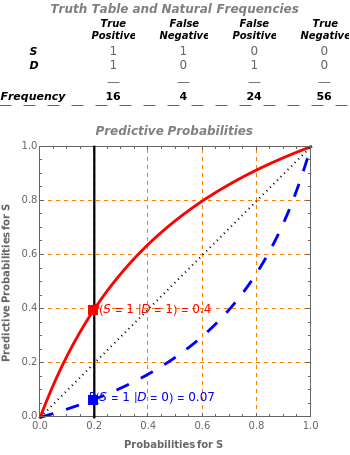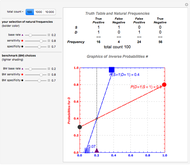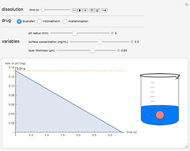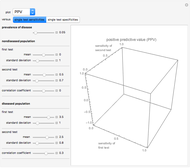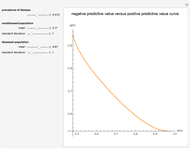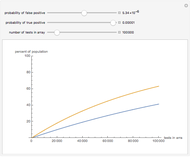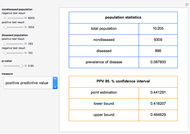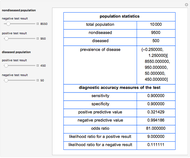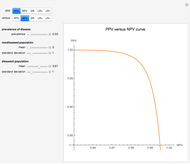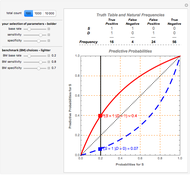The Discriminatory Power of Diagnostic Information from Discrete Medical Tests

Requires a Wolfram Notebook System
Interact on desktop, mobile and cloud with the free Wolfram Player or other Wolfram Language products.
A useful diagnostic test should provide information that helps to discriminate between competing hypotheses. But any practical diagnostic will be imperfect: both false positive and false negative indications are to be expected. So just how useful is a diagnostic test when it is, necessarily, imperfect? In [1], p. 44 shows a static, graphical example of how Bayes's theorem may be used to understand the factors determining the discriminatory power of diagnostic tests. This Demonstration is a dynamic version of that argument.
[more]
Contributed by: John Fountain and Philip Gunby (March 2011)
Open content licensed under CC BY-NC-SA
Snapshots
Details
A richer explanation of Bayes's theorem in the 2×2 case is available in the Demonstration Bayes's Theorem and Inverse Probability. A comprehensive explanation of the natural frequency method of representing probability distributions in the 2×2 discrete case is available in the Demonstration Comparing Ambiguous Inferences when Probabilities Are Imprecise.
Snapshot 1: a reduced base rate (20% down to 5%)
Snapshot 2: an improved specificity (70% up to 95%)
Snapshot 3: an improved sensitivity (80% up to 95%)
[1] J. M. Bernardo and A. F. M. Smith, Bayesian Theory, New York: John Wiley & Sons, 1994.
Permanent Citation
